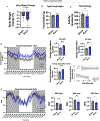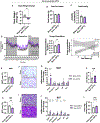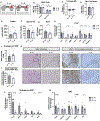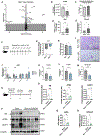Subcutaneous white adipose tissue independently regulates burn-induced hypermetabolism via immune-adipose crosstalk
- PMID: 38117653
- PMCID: PMC10845122
- DOI: 10.1016/j.celrep.2023.113584
Subcutaneous white adipose tissue independently regulates burn-induced hypermetabolism via immune-adipose crosstalk
Abstract
Severe burns induce a chronic hypermetabolic state that persists well past wound closure, indicating that additional internal mechanisms must be involved. Adipose tissue is suggested to be a central regulator in perpetuating hypermetabolism, although this has not been directly tested. Here, we show that thermogenic adipose tissues are activated in parallel to increases in hypermetabolism independent of cold stress. Using an adipose tissue transplantation model, we discover that burn-derived subcutaneous white adipose tissue alone is sufficient to invoke a hypermetabolic response in a healthy recipient mouse. Concomitantly, transplantation of healthy adipose tissue alleviates metabolic dysfunction in a burn recipient. We further show that the nicotinic acetylcholine receptor signaling pathway may mediate an immune-adipose crosstalk to regulate adipose tissue remodeling post-injury. Targeting this pathway could lead to innovative therapeutic interventions to counteract hypermetabolic pathologies.
Keywords: CP: Metabolism; adipose tissue; browning; burn injury; hypermetabolism; inflammation.
Copyright © 2023 The Authors. Published by Elsevier Inc. All rights reserved.
Conflict of interest statement
Declaration of interests The authors declare no competing interests.
Figures






References
Publication types
MeSH terms
Grants and funding
LinkOut - more resources
Full Text Sources
Medical
Miscellaneous

